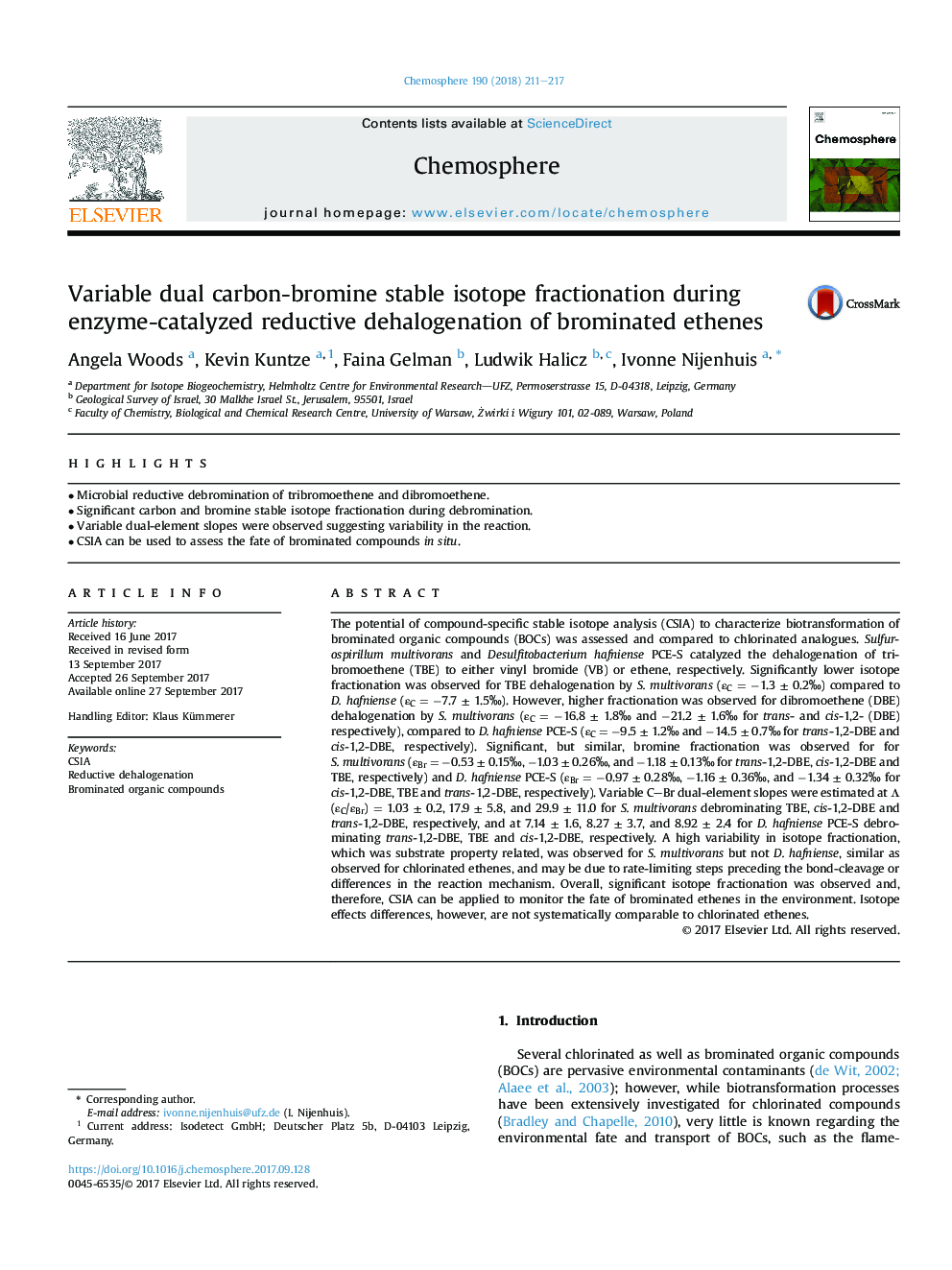| Article ID | Journal | Published Year | Pages | File Type |
|---|---|---|---|---|
| 5745765 | Chemosphere | 2018 | 7 Pages |
â¢Microbial reductive debromination of tribromoethene and dibromoethene.â¢Significant carbon and bromine stable isotope fractionation during debromination.â¢Variable dual-element slopes were observed suggesting variability in the reaction.â¢CSIA can be used to assess the fate of brominated compounds in situ.
The potential of compound-specific stable isotope analysis (CSIA) to characterize biotransformation of brominated organic compounds (BOCs) was assessed and compared to chlorinated analogues. Sulfurospirillum multivorans and Desulfitobacterium hafniense PCE-S catalyzed the dehalogenation of tribromoethene (TBE) to either vinyl bromide (VB) or ethene, respectively. Significantly lower isotope fractionation was observed for TBE dehalogenation by S. multivorans (εC = â1.3 ± 0.2â°) compared to D. hafniense (εC = â7.7 ± 1.5â°). However, higher fractionation was observed for dibromoethene (DBE) dehalogenation by S. multivorans (εC = â16.8 ± 1.8â° and â21.2 ± 1.6â° for trans- and cis-1,2- (DBE) respectively), compared to D. hafniense PCE-S (εC = â9.5 ± 1.2â° and â14.5 ± 0.7â° for trans-1,2-DBE and cis-1,2-DBE, respectively). Significant, but similar, bromine fractionation was observed for for S. multivorans (εBr = â0.53 ± 0.15â°, â1.03 ± 0.26â°, and â1.18 ± 0.13â° for trans-1,2-DBE, cis-1,2-DBE and TBE, respectively) and D. hafniense PCE-S (εBr = â0.97 ± 0.28â°, â1.16 ± 0.36â°, and â1.34 ± 0.32â° for cis-1,2-DBE, TBE and trans-1,2-DBE, respectively). Variable CBr dual-element slopes were estimated at Î (εC/εBr) = 1.03 ± 0.2, 17.9 ± 5.8, and 29.9 ± 11.0 for S. multivorans debrominating TBE, cis-1,2-DBE and trans-1,2-DBE, respectively, and at 7.14 ± 1.6, 8.27 ± 3.7, and 8.92 ± 2.4 for D. hafniense PCE-S debrominating trans-1,2-DBE, TBE and cis-1,2-DBE, respectively. A high variability in isotope fractionation, which was substrate property related, was observed for S. multivorans but not D. hafniense, similar as observed for chlorinated ethenes, and may be due to rate-limiting steps preceding the bond-cleavage or differences in the reaction mechanism. Overall, significant isotope fractionation was observed and, therefore, CSIA can be applied to monitor the fate of brominated ethenes in the environment. Isotope effects differences, however, are not systematically comparable to chlorinated ethenes.
